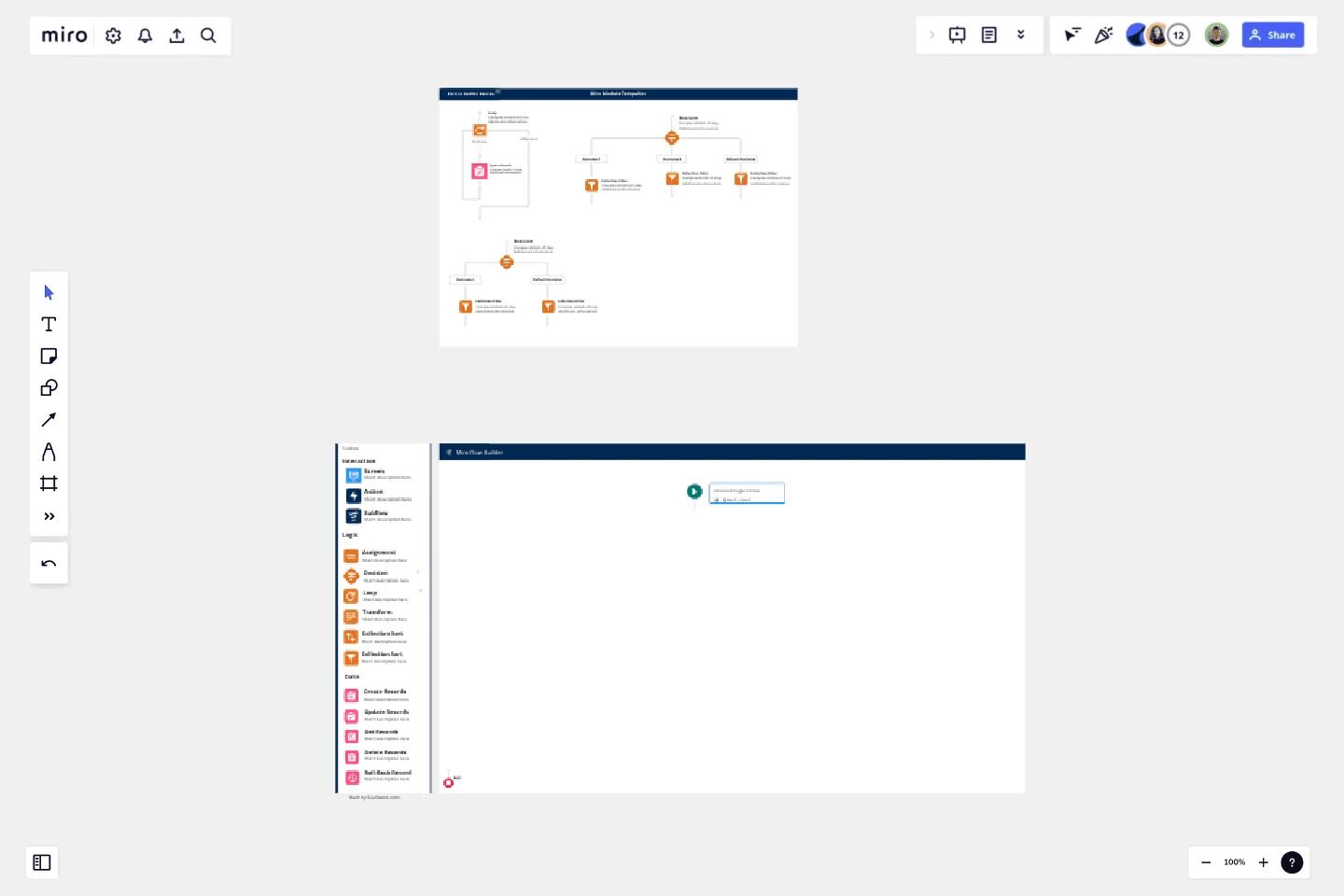Salesforce Flow Builder
This template empowers you to create comprehensive documentation for the incredible flows you develop in Salesforce.
This template empowers you to create comprehensive documentation for the flows you develop in Salesforce, making it an essential resource for training, change management, and team collaboration.
The template excels in two main areas:
Facilitating feedback collection without requiring Salesforce access.
Tracking and annotating Salesforce workflows post-build with detailed notes and context.
Designed to address the critical challenge of documenting complex automations, this template aims to make documentation woes a thing of the past.
This template was created by Stephen Stouffer.
Get started with this template right now.
Detailed Empathy Map With Personas
Works best for:
Empathy Map
Understand your audience better with the Empathy Map Personas template. This tool helps you capture insights into your customers' needs, thoughts, feelings, and behaviors. By visualizing these personas, you can tailor your product development, marketing strategies, and customer interactions to better meet their needs and enhance user satisfaction. Ideal for teams focused on customer-centric solutions.
GenAI Application Workflow
Works best for:
Flowcharts, Mapping, Diagrams
The GenAI Application Workflow template is a visual tool for mapping out the workflow of applications developed using GenAI. It provides elements for defining process steps, decision points, and data flows within the application. This template enables developers and project teams to visualize the application workflow, identify potential bottlenecks, and optimize the user experience. By promoting clarity and efficiency in application development, the GenAI Application Workflow empowers teams to deliver innovative and user-friendly applications effectively.
Empathy Map by Habanero Consulting
Works best for:
Empathy Map
The Empathy Canvas Map template is a comprehensive tool for understanding your users' needs, emotions, and experiences. Use this canvas to capture detailed insights into what your users see, think, feel, and do. By visualizing these elements, you can design more user-centered products and services. This template is perfect for teams focused on empathy-driven design and innovation, ensuring your solutions resonate deeply with users.
Social Media Strategy Planning
Works best for:
Roadmap, Planning, Mapping
The Social Media Strategy Planning template provides a structured approach for developing and implementing social media strategies. By defining objectives, target audiences, and content plans, teams can maximize the impact of their social media efforts. This template fosters collaboration and alignment across teams, ensuring that social media initiatives are integrated with broader marketing goals and contribute to overall business objectives.
Recruitment Strategy Roadmap
Works best for:
Roadmap, Planning, Mapping
The Recruitment Strategy Roadmap template helps organizations plan and execute their talent acquisition initiatives effectively. It provides a structured framework for identifying hiring needs, sourcing candidates, and evaluating recruitment channels. By aligning recruitment efforts with business objectives, organizations can attract and retain top talent, driving organizational growth and success.
Customer Touchpoint Map Template
Works best for:
Desk Research, Product Management, Mapping
To attract and keep loyal customers, you have to truly start to understand them—their pain point, wants, and needs. A customer touchpoint map helps you gain that understanding by visualizing the path your customers follow, from signing up for a service, to using your site, to buying your product. And because no two customers are exactly alike, a CJM lets you plot out multiple pathways through your product. Soon you’ll be able to anticipate those pathways and satisfy your customers at every step.
